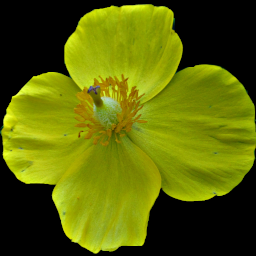 The thin leaves are indeed a distinguishing feature of this plant; most sunflowers have coarse and strong leaves, but these are thin and rather weak. These plants were growing on a shady wooded hillside above a back street in Beechview.
The thin leaves are indeed a distinguishing feature of this plant; most sunflowers have coarse and strong leaves, but these are thin and rather weak. These plants were growing on a shady wooded hillside above a back street in Beechview.
Flower Heads. The disk is smallish and golden yellow. The matching golden rays are long and narrow; there were ten to twelve of them on each of the flower heads on this plant, but (as the specific name implies) ten is a good average for this species. Note the long, narrow bracts, visible on the bud to the left in the photograph above.
Leaves. Thin; rough on some plants, smooth on others; ovate, pointed; toothed; upper leaves nearly sessile; lower on winged petioles.
Stem. Smooth and tough, green with a few red spots; about 4 feet tall.
Gray describes the genus and the species:
HELIÁNTHUS L. Sunflower. Heads many-flowered; rays several or many, neutral. Involucre Imbricated, herbaceous or foliaceous. Receptacle flat or convex; the persistent chaff embracing the 4-sided and laterally compressed smooth achenes, which are neither winged nor margined. Pappus very deciduous, of 2 thin chafly scales on the principal angles, and sometimes 2 or more small intermediate scales. — Coarse and stout herbs, with solitary or corymbcd heads, and yellow rays; flowering toward autumn. (Named from helios, the sun, and anthos, a flower.)
§2. Perennials; receptacle convex or at length low-conical; lower leaves usually opposite.
Involucre looser, the bracts more acuminate or elongated or foliaceous.
Leaves all or most of them opposite, 3-nerved.
Leaves longer-petiolate, thinnish or sofl, coarsely serrate, commonly broad; bracts loose, hirsute-ciliate.
H. decapétalus L. Stem branching, 0.5-1.5 m. high, smooth below; leaves smooth or roughish, ovate, pointed, abruptly contracted into margined petioles; bracts lanceolate-linear, elongated, loosely spreading, sometimes foliaceous, the outer longer than the disk; rays about 10 (H. scrophulariifolius Britton?) — Copses and low banks of streams, centr. Me. and w. Que. to Minn., Mo., and southw.







